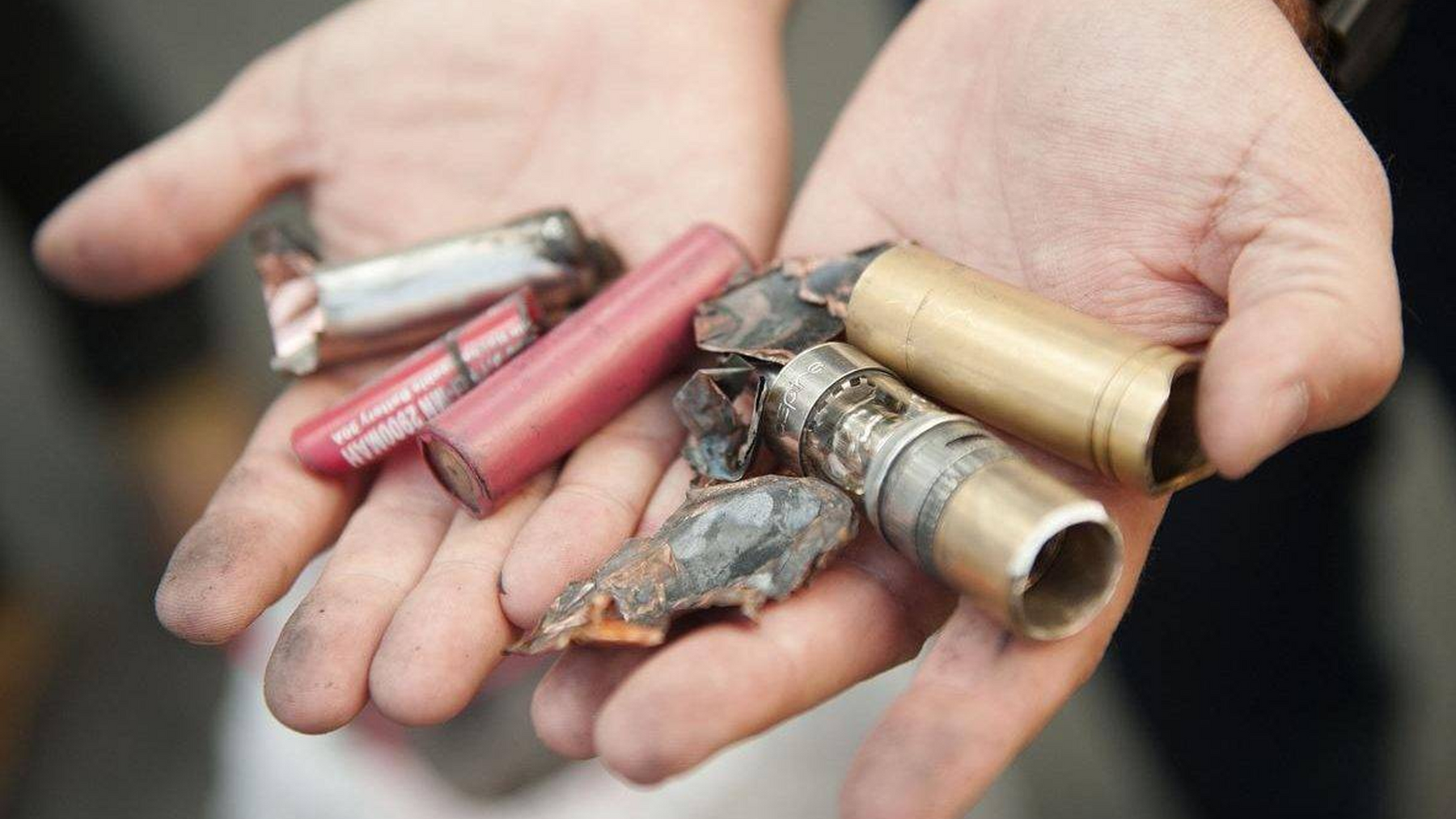
Why E-Cigarette Vaporizer Batteries Are Exploding And How You Can Prevent It
E-Cigarette battery explosions seem to be fairly commonplace these days. Whether it's a man in Florida or a teenager in Russia, unsuspecting consumers across the globe are finding themselves in the crosshairs of Lithium-Ion technology.
So - why is it happening? What is causing these explosions? The answer is a bit more complicated than you might think but rest assured it all boils down to one thing: counterfeit batteries.
E-Cigarettes and handheld vaporizers aren't like your typical electronic devices. They require the energy-dense power of lithium.
The most common style of Lithium-Ion cell used today is known as an 18650. The 18650 cell has been around for a while and is used in a number of applications including laptop battery packs, power tool battery packs, Tesla cars, and even our own tactical flashlights.

(Tesla 18650 cell on the left and TakLite 18650 cell on the right. Look familiar?)
However, there is a major difference to note. In applications such as laptop battery packs, the 18650 cells are contained in an enclosure. This mitigates a lot of the safety hazards usually associated with handling lithium-ion cells. It's pretty difficult for an unsuspecting consumer to short-circuit or damage the cells when they are sealed shut in a durable case.
Something as benign as placing a spare 18650 cell in a purse, jacket, or pocket can very quickly become catastrophic.
The Problems Don't Stop There
The issues described above are just part of the problem. The crux of the matter actually involves technical nuances and a disturbing market trend that shows no signs of slowing down.
18650 cells are very heavily faked and/or counterfeited. Chinese sellers on popular auction sites such as eBay and Amazon can be found selling low quality, inferior, and misreported 18650 cells. These batteries typically have blatantly misreported capacities and are manufactured using low quality Chinese cells.
In one of our tests, we compared a supposedly 4800mAh counterfeit cell with our premium 2600mAh cell. The results were shocking.

Note the weight of the supposed 4800mAh capacity cell above. Now here is our 2600mAh cell below.

How is this possible? How does this supposed 4800mAh cell which has nearly double the capacity of our 2600mAh cell weigh 60% less? Simple. The manufacturer of the counterfeit cell lied about the capacity. In reality, these counterfeit cells tend to be closer to 700mAh in capacity. The lower capacity a cell is, the less current it can handle for the purposes of charging and discharging.
And guess what comes up when you search for "18650 battery" on Amazon or eBay? You guessed it. These same inferior cells.
The average consumer does not know how to differentiate this.
One Size Does Not Fit All
The other side of the issue is not all 18650 batteries are built for the same purpose. Recent advancements in E-Cigarette technology have called for the use of high drain 18650 batteries. An average 18650 cell has a maximum discharge rate of approximately 5A-7A. High drain 18650 cells can safely discharge nearly four times as much current.
Using a regular 18650 cell in a high drain E-Cigarette is a recipe for disaster. The issue is exacerbated ten fold if the consumer is using the counterfeit/low quality 18650 cells described above.
PCB Protection And Its Role In Your Safety
Lithium-Ion batteries are finicky. You can't drain them completely or you will ruin them. You can't charge them excessively either or they will vent flames. These batteries require a happy medium for efficient operation.
To help restore a modicum of practicality to these batteries, high quality 18650 batteries are often found equipped with a small microchip responsible for regulating the voltage. This microchip will prevent consumers from both draining the battery too low (over-discharging) or charging the battery too much (overcharging).
The issue is most current high drain batteries on the market simply lack this microchip. Even with a cell manufactured by one of the most reputable companies in the game, the consumer's safety largely depends on their understanding of these cells.
The "Dumb Proof" Approach
Some e-cigarette/vaporizer manufacturers have attempted to tackle this problem by integrating an 18650 cell directly into the device and making it non-removable. A simple USB port will allow the customer to charge the device internally - thus removing the need to ever remove the battery. In theory, this isn't a bad idea. It eliminates the risk of the consumer using a wrong battery type or otherwise causing damage to the cell. These integrated charging systems also tend to have a mechanism to monitor the voltage -- which allows for the use of unprotected batteries.
But, the effectiveness of this plan depends on the credibility of the manufacturer. It also isn't an ideal solution since it restricts users to using the factory supplied cell and removes the ability to swap batteries.
It's Not Over Yet
It's a difficult pill to swallow but these incidents will continue to happen. As the popularity of these devices continues to grow, more and more consumers will inevitably cross paths with either counterfeit cells or under-specced cells.
Manufacturers and distributors should be informed on the topic and do their best to forward the information to the consumer. Consumers should also make an effort to remain aware of these facts.
My advice would be to do your homework. If you're an avid e-cigarette user, you should be familiar with the technology and exactly how it works. 18650 cells, when used appropriately and responsibly, are incredibly useful and energy dense sources of power.
In fact, most enthusiasts dream of seeing these cells used in nearly every battery powered device on the planet. They are that good.
